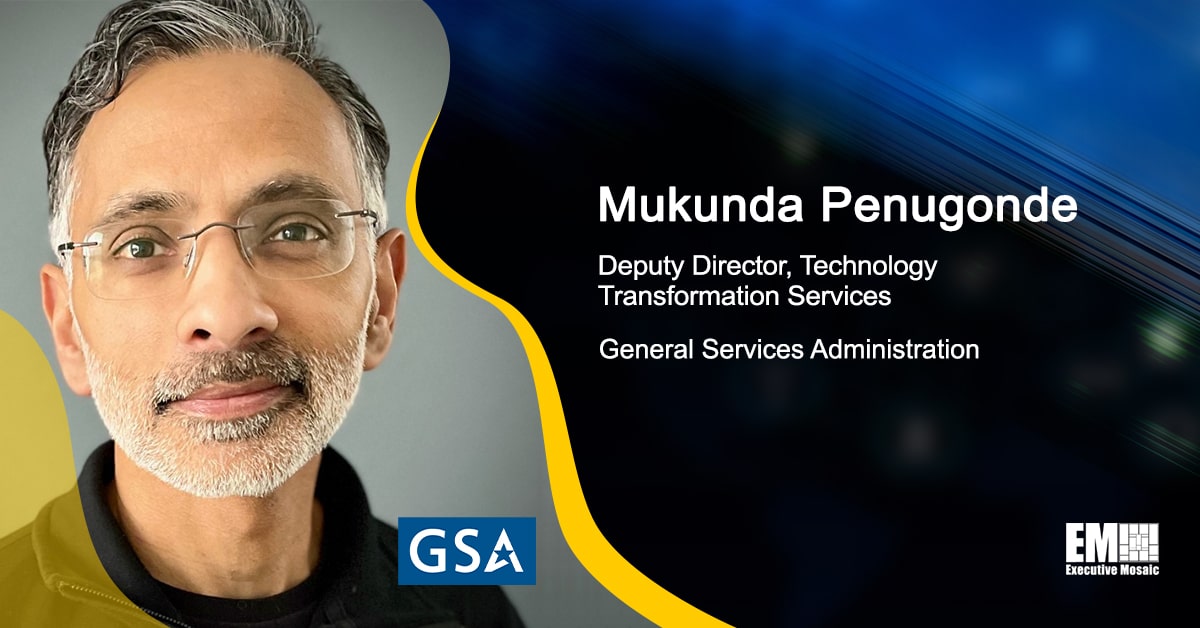The U.S. General Services Administration serves as the backbone of the government contracting sector, and as such, it’s responsible for delivering top-notch customer experience and value in technology services to the government and American citizens.
One component of GSA in particular, Technology Transformation Services, carries much of this mission by using modern methodologies and technologies to improve the public’s experience with the government.
TTS Deputy Director Mukunda Penugonde took on his current role in April 2023, and during the Government Technology & Acquisition Forum hosted by GovCon Wire he said, “In the short time that I’ve been deputy director of TTS, I’ve noticed that change is actively taking place at TTS in a couple really unique and explicit ways.”
The first area of change Penugonde shared is in the agency’s approach to delivery, which is becoming more agile in nature. Although this approach is quite common in the private sector, it’s still relatively new within the federal landscape. But Penugonde said it’s gaining traction.
“At TTS, we’re beginning to see the signs that our agency partners are more receptive to the idea of incremental delivery in value,” he noted.
Penugonde described a recent modernization effort for a legacy system in which he met with stakeholders from the highest levels of leadership and explained how a transformation could begin with a minimum viable product, or MVP, which would launch within a year. From there, incremental updates would be added each quarter and the full solution would be delivered a few years later.
“The stakeholders quickly understood that this incremental approach allowed a value to be delivered to the greatest number of users in a much, much more quick timeline. The shift in mindset was new and a big change from how software projects had been expected to run,” he said.
“So the change in mindset of moving from a long-term fixed scope budgeted project to an actual model is something we are seeing much more acceptance of,” Penugonde revealed.
The second major area of change within TTS is a shift toward industry-proven technologies and standards. Currently, the tech stack at TTS is “quite broad,” due to several factors such as the addition of new lines of business and new programs over the last few years, many of which include legacy systems that need to be modernized.
“Legacy systems often ride on the backs of proprietary software, which is difficult and costly to maintain,” he said. “Because of this, we’re moving towards common technical frameworks and elements for our products and platforms — things like shared services across the federal market. In some cases, that includes open source software, which even in the past has been met with some skepticism, but is now understood.”
Penugonde noted that these tools will be reusable, saving the agency time and money, but that doesn’t mean they will be applicable for every problem the GSA needs to solve.
“We strongly believe that we need to choose the right technical solution for the problem, but we may not need a free-for-all approach to our tech stack. Instead, there may be a menu of known solutions that are proven out and widely known and accepted, such as using programming languages like Java, Python, JavaScript, and tools like GitHub, Jira and Docker,” explained Penugonde.
Technology modernization is important for agencies like GSA, and it’s absolutely essential for military service branches as they carry out critical national security missions. Find out how the Department of Defense is tackling modernization — join the ExecutiveBiz Defense Software Modernization Forum on June 7 to learn more. Register here.

















